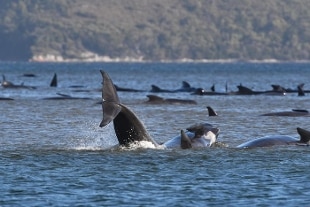Men and whales: close encounter
Japan, the fleet that will hunt 985 whales sets sail.
Environmentalists on a war footing
Share
02 October 2020Can 6 thousand members of the armed forces of the United Kingdom, other NATO countries and partner states, 28 warships, two submarines and 81 aircraft be stopped?
The answer is yes.
A small herd of whales succeeded in blocking NATO exercises along the Scottish coast.
Everything has been tried.
The British organization Divers Marine Life Rescue (BDMLR) had positioned ten boats as a barrier to prevent mammals from ending up in the waters of Loch Long and Gare Loch, two marine lochs in western Scotland.
But nothing.
The bottlenose whales have changed direction, but only to return to the area where the Falsane naval base is located, north of Glasgow, which is home to a fleet of nuclear-powered Royal Navy submarines.
The fear of experts is also that cetaceans, sensitive to sounds under the sea, may suffer from the imminent military simulation.
Meanwhile, the NATO exercise, called 'Joint Warrior', remains set for October 4-15.
Resignation also for Divers Marine Life Rescue.
Spokeswoman Julia Cable spreads her arms: "We tried, but if the whales are not lured away by the current, there is not much to do."
Evidently something has happened, say conservationists. Northern bottlenose dolphins are a species of cetacean normally found off the continental shelf, west of Ireland and the UK, but it is very rare to encounter them in waters near the coast. Something has changed. Meanwhile the days pass, the whales stay close to the coast and strategies are scarce.

